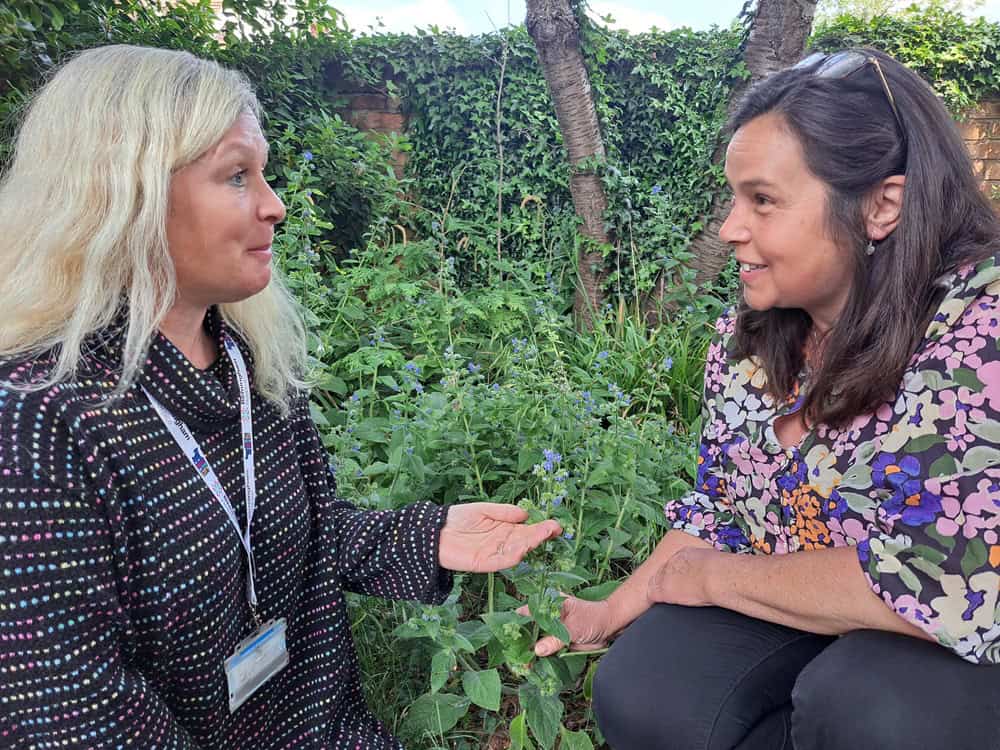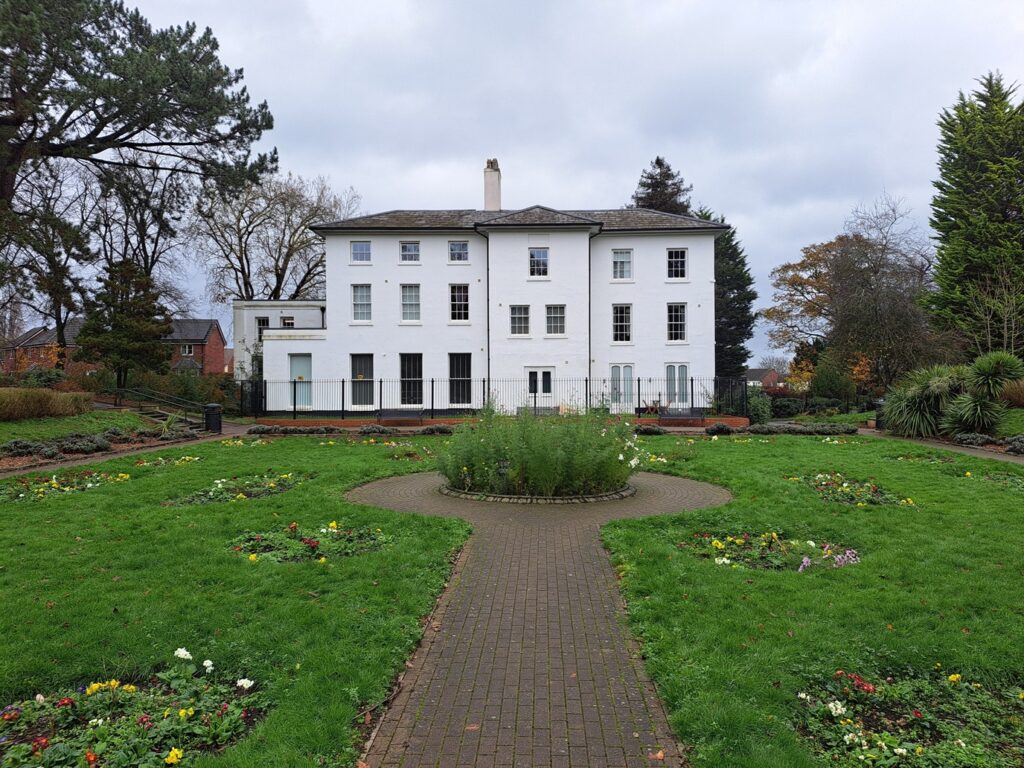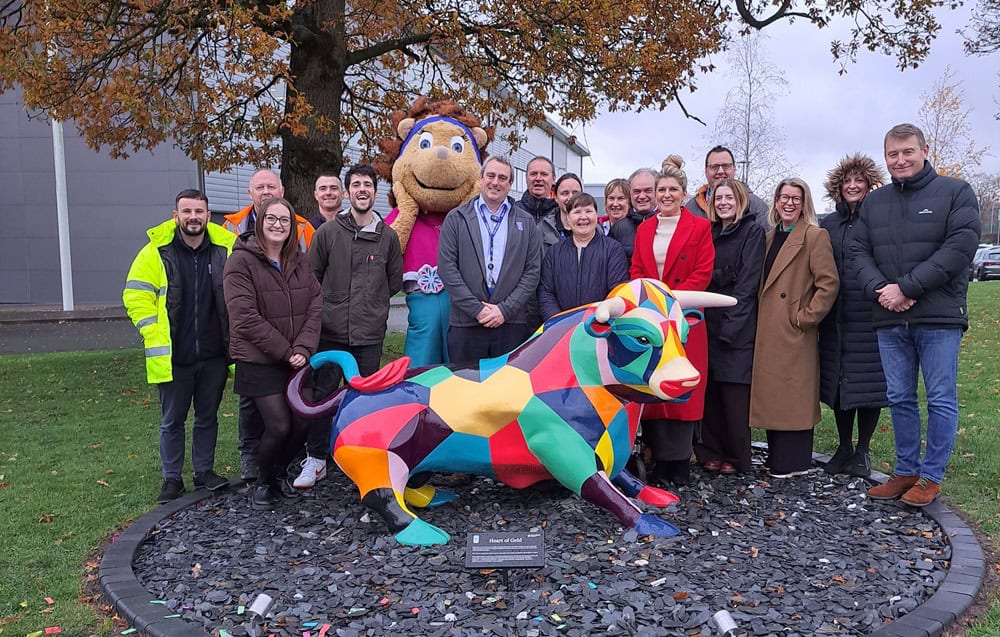WHEN Emma Nicholls was struggling to come to terms with the loss of husband Lea she turned to an innovative therapy at Birmingham Hospice where she explored her grief through the natural world.
Emma was able to reconnect to her emotions with the support of hospice art therapist Caron Smith, who suggested the groundbreaking Environmental Art Therapy (EAT) after Emma explained how much she felt at home outside in a natural environment.
EAT is a therapeutic approach which engages with nature to process emotions and feelings, to help those who have lost a loved one externalise, explore, and process their grief.
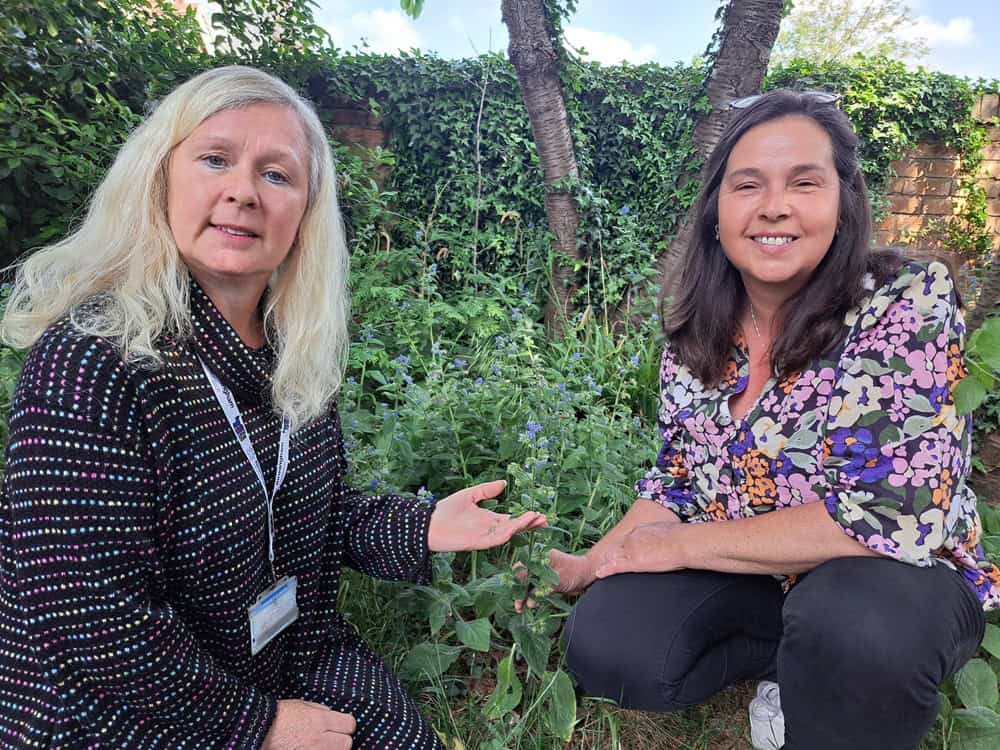
Hospice art therapist Caron Smith (left).
Emma explored outside spaces with Caron; she used metaphor and symbolism to connect natural objects that she found to express how she felt in that moment.
From a therapeutic standpoint, EAT offered Emma a safe, open space where she could regulate her emotions and process her traumatic memories.
Birmingham Hospice supported Lea and the family after he received a terminal cancer diagnosis in 2020. With our Community Team’s help, he was able to be at home in his final days in 2022.
The family raised thousands of pounds for the hospice by cycling from Birmingham to London along the Grand Union canal.
Lea was an enthusiastic musician and formed folk band Wooden Dog with sons Alfie and George, who honoured their dad after his death by organising the Dadfest music festival. They played Lea’s favourite songs and original compositions they wrote with him to continue the fundraising efforts he started.
Several months after losing Lea, Emma was struggling to process his death. She felt traditional forms of therapy were not right for her, but she and Lea had always enjoyed going on walks, so Caron suggested EAT to her.
“I was really open to being outside and walking and talking instead of being in an office environment,” said Emma.
The initial meetings focused on Lea’s final few days at home, as this was something Emma was struggling with and kept replaying in her mind.
Sessions were held in Pype Hayes Park, where Emma would lead the way to uncover natural objects in the environment that would reflect a certain situation or challenge and help her to express herself through interacting with it.
For example, the Plants Brook stream became a living metaphor which helped Emma work through and express the non-linear path of grief she was living with.
She said: “It was a traumatic time caring for your partner and watching them slip away, even though the hospice made it so much more bearable.
“I was replaying those thoughts in my head and felt stuck. During one session I watched the way the water would sometimes be blocked but would find a way through.
“It was watching the journey of a twig I placed into the river, and realising it was very symbolic of how I felt. I did have better days when I felt I was coping with my grief, but it would get stuck at a point and then gradually get swept along.”
Through this experience Emma was able to connect with natural objects that symbolised different aspects of her life such as Lea, which really helped Emma.
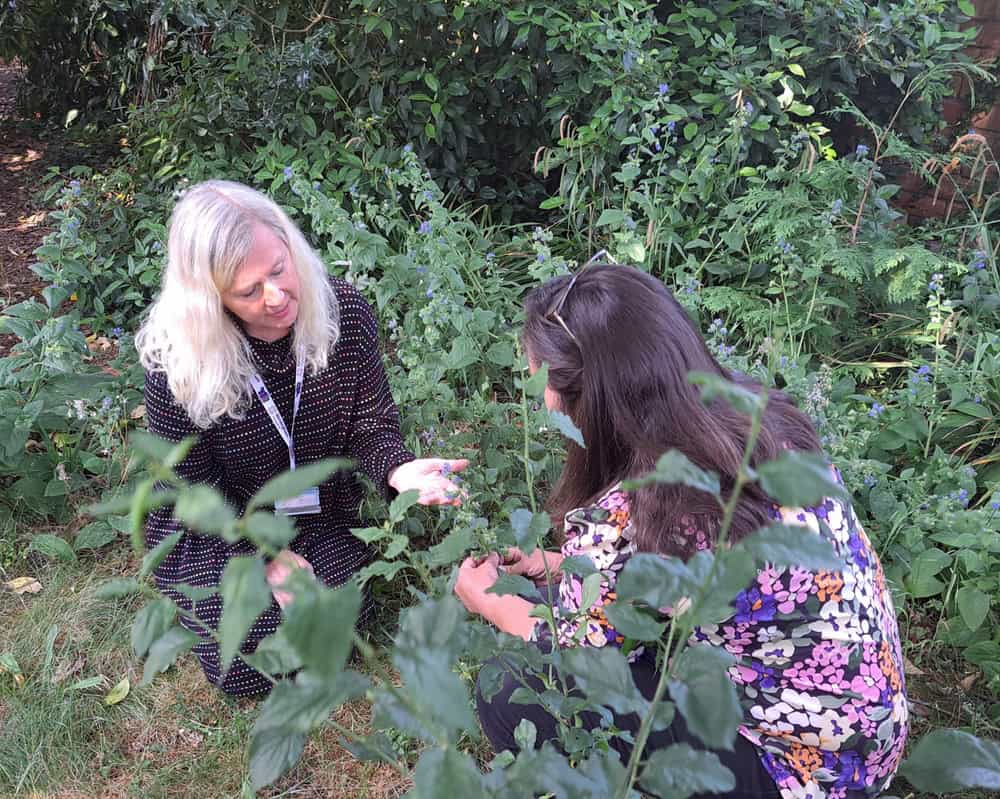
(EAT) to help her reconnect with her
emotions.
A sturdy oak tree in the park was renamed ‘Lea’s Tree’ as it embodied what made him such a special person and became a focal point for reflection.
Emma said: “There was a huge old oak that stood out from all the rest, it was a reminder of some of the qualities Lea had. We started calling it ‘Lea’s Tree’ because the saplings looked as though they were looking up to him.”
Emma would often sit with eyes closed, leaning against and feeling supported by the oak, which had a powerful and positive experience.
She explained: “I had this overwhelming sensation of being hugged and kept safe. I’ll never forget that session; I had my eyes closed, and it felt like my face was being touched and I was enveloped in warmth. It felt like Lea was there.”
Emma continues to notice things symbolically in nature, like she did in the EAT sessions with Caron. For example, a robin which visits the family garden regularly, particularly on significant birthdays, has come to represent her husband.
She added: “Environmental Art Therapy has helped me process and connect with my grief more deeply than if I had just been talking to someone one-to-one. It gave me a safe environment to process what was happening and notice things in nature to represent how I was feeling at that time.”
EAT is another powerful method helping those who have experienced a bereavement to receive the support they need. Our Wellbeing Team offers a range of therapeutic support for people connected to the hospice.
“Nature really does allow for people to explore more deeply,” said Caron.
“It provides people with a bigger picture, especially when they are struggling to come to terms with their grief.
“Nature gives clients the space to externalise their internal world. It allows them to move, reflect, and reconnect with themselves and their memories in a way that feels organic and safe.”
